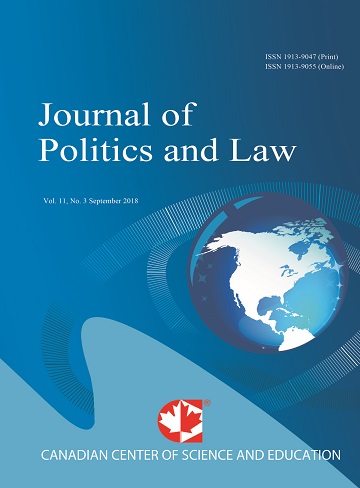International Legal Challenges on Biotechnological Products
- Saeed Daryaee Bajhdad Abadi
- Mohammah Hossain Ramazani Ghavam Abadi
- Seyed Ghasem Zamani
- Mehrzad Kiani
Abstract
Selection and separation of inheritance has the desired characteristics of plants, animals and organisms have specific morphological characteristics and called them in terms of biotechnology. Including applications help farmers to reduce the amount of fertilizers , chemical pesticides, water and fuel consumption for the production of food As well as biotechnological products can be used for purification and cleansing the environment and food production at lower costs and reduce the use of harmful chemicals to human health and the environment. However, criticism has been leveled on biotechnology, for example, genetically modified organisms, unlike chemicals, have a risk of spread and replication capabilities and unknown toxins may be produced by biotechnological products or reduce biodiversity, genetic contamination and poisoning and destroy beneficial insects harmless. This article, in addition to addressing various aspects of biotechnology, seeking to assess the strengths and limitations of current international law and structures designed to address these concerns communities. Biotechnology problems at the international level and treaties related to each of them are as follows: A) Concerns about patent genetically modified crops: National rules developed countries, genetically modified crops have to support intellectual property. If to be biotech crops intellectual property rights, the bulk of the food of world award to several capitalist companies .B) Concerns about Transparency Regarding Exports of Genetically Modified Products: Notification of genetically modified content could be achieved through a labeling system C) Liability for damage caused by genetically modified imported products: The international community have tried to establish international rules on liability and compensation for damage caused by genetically modified crops that in the Biosafety Protocol, the provisions limiting the harmful effects caused by genetically modified organisms. D) Liability of Trans boundary damage caused by genetically modified crops: Genetically modified crops could have a negative impact on the environment of neighboring states, even if completely in a state of production and consumption .After careful consideration of the above it can be concluded that there is not a single treaty regime and specific concerns to address the biotechnology. But we are faced to fragmented and conflicting network of treaties relating to intellectual property, trade and the environment, as well as a series of general principles of law and legal norms ambiguous.- Full Text:
 PDF
PDF
- DOI:10.5539/jpl.v9n7p247
Journal Metrics
h-index (2017): 14
i10-index (2017): 39
h5-index (2017): 9
h5-median (2017): 11
Index
- Academic Journals Database
- ACNP
- ANVUR (Italian National Agency for the Evaluation of Universities and Research Institutes)
- Berkeley Library
- CNKI Scholar
- COPAC
- CrossRef
- DTU Library
- EBSCOhost
- Elektronische Zeitschriftenbibliothek (EZB)
- EuroPub Database
- Excellence in Research for Australia (ERA)
- Genamics JournalSeek
- GETIT@YALE (Yale University Library)
- Ghent University Library
- Google Scholar
- Harvard Library
- HeinOnline
- INDEX ISLAMICUS
- Infotrieve
- Jisc Library Hub Discover
- JournalGuide
- JournalTOCs
- LOCKSS
- MIAR
- Mir@bel
- NewJour
- Norwegian Centre for Research Data (NSD)
- Open J-Gate
- PKP Open Archives Harvester
- Publons
- Pubmed journal list
- RePEc
- ROAD
- Scilit
- SHERPA/RoMEO
- Standard Periodical Directory
- Stanford Libraries
- UCR Library
- Ulrich's
- UniCat
- Universe Digital Library
- UoS Library
- WorldCat
- Zeitschriften Daten Bank (ZDB)
Contact
- William TaiEditorial Assistant
- jpl@ccsenet.org
